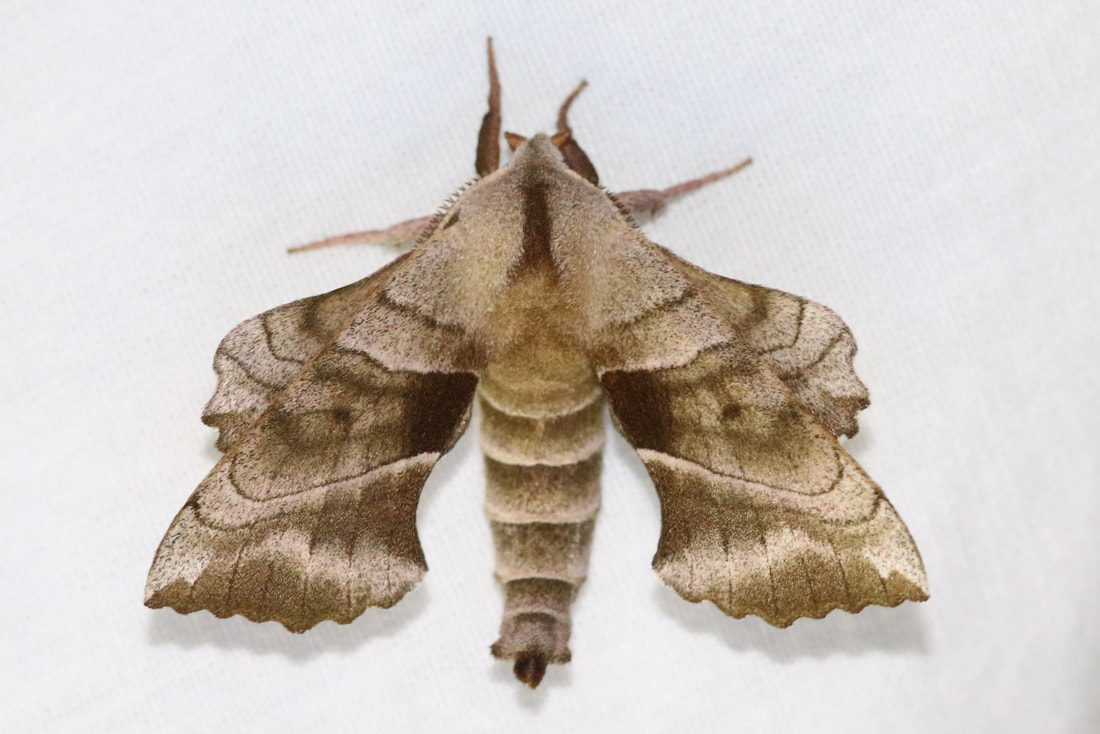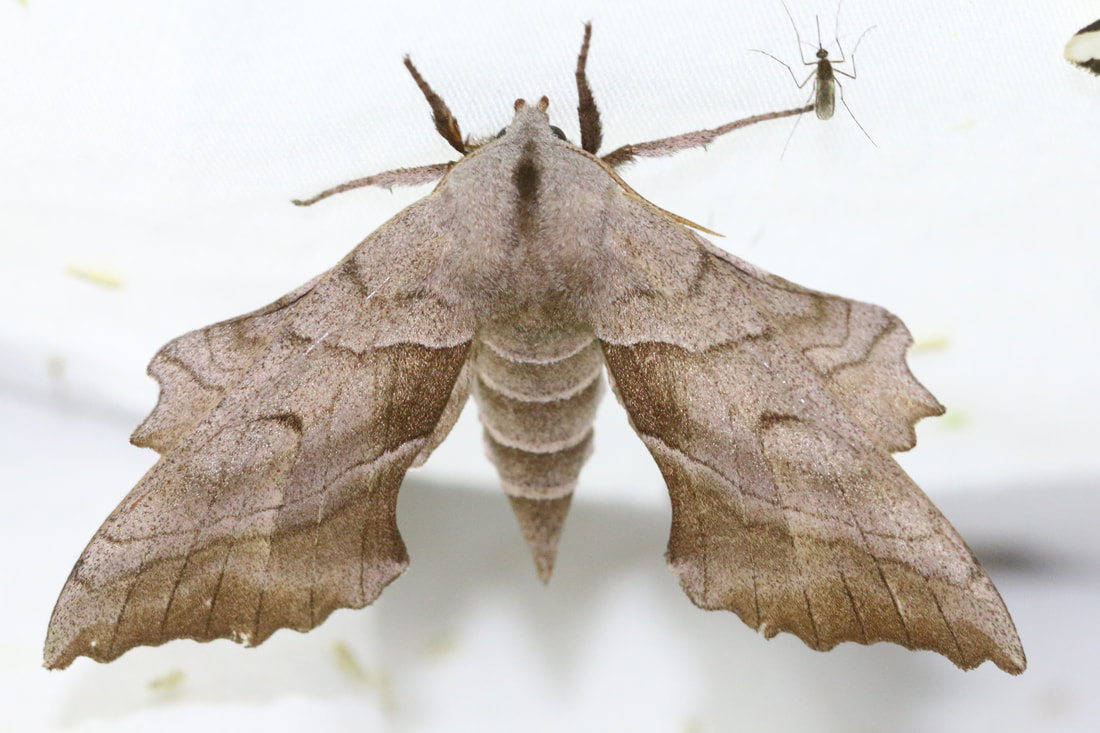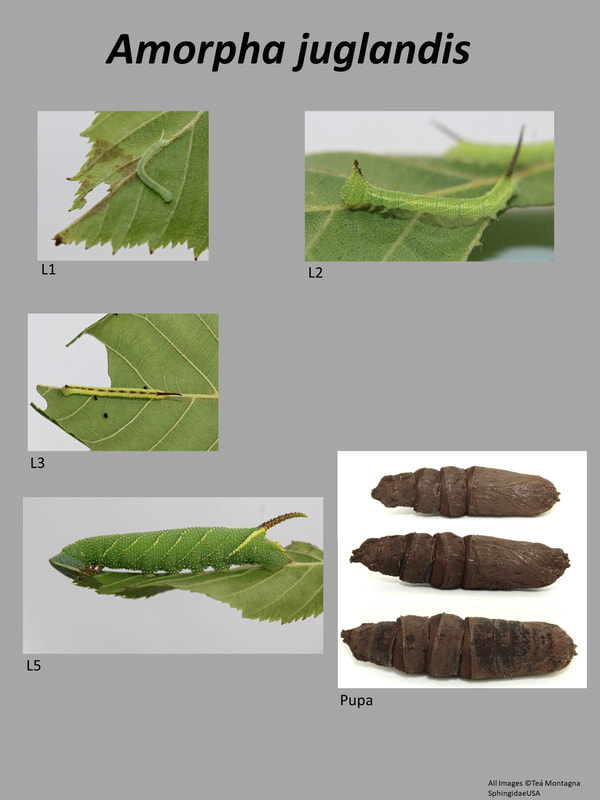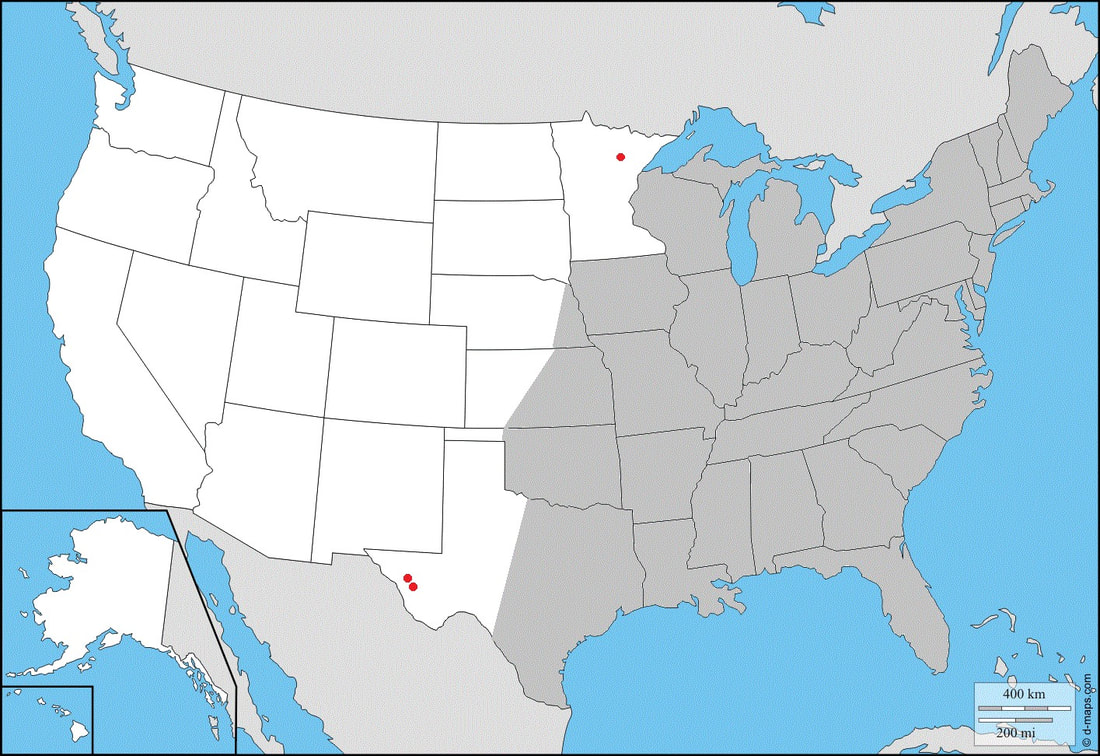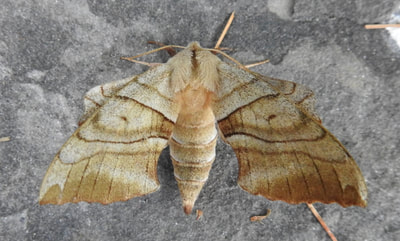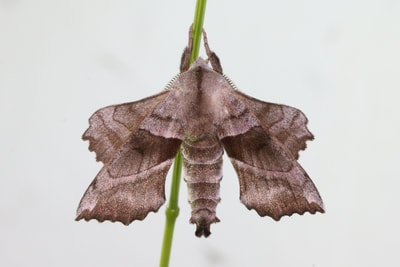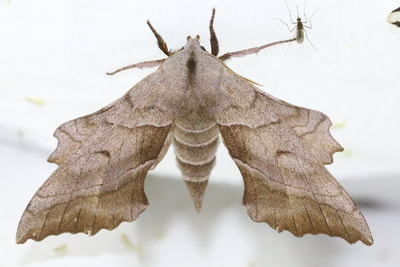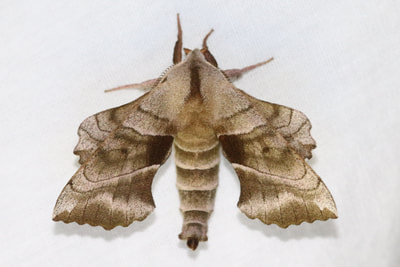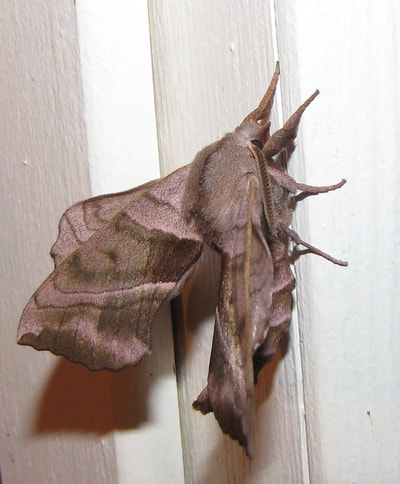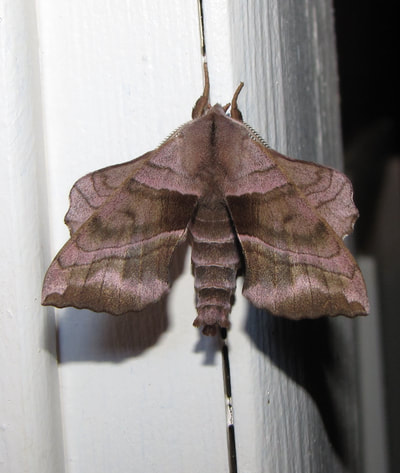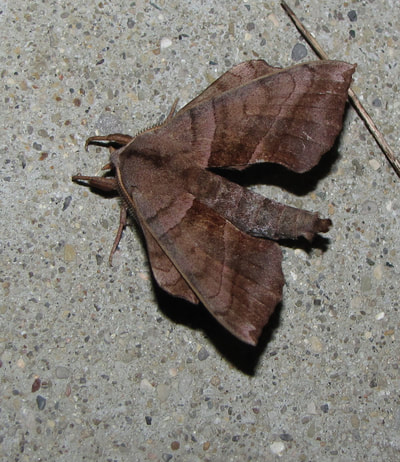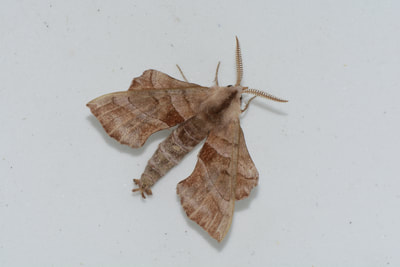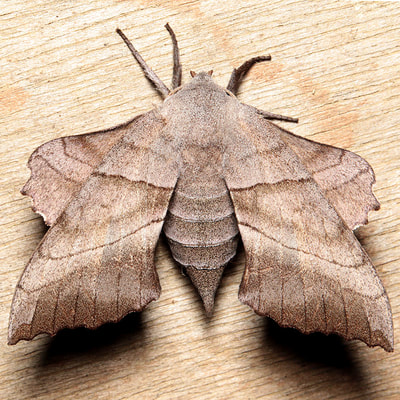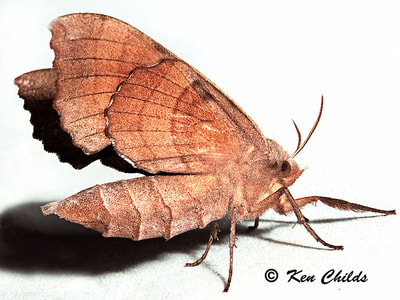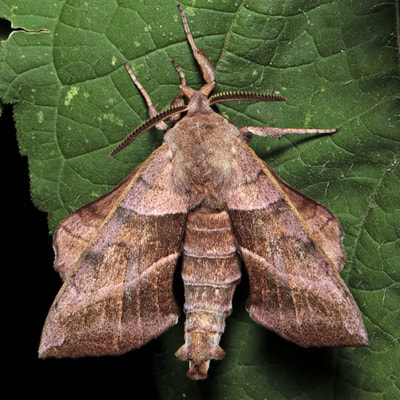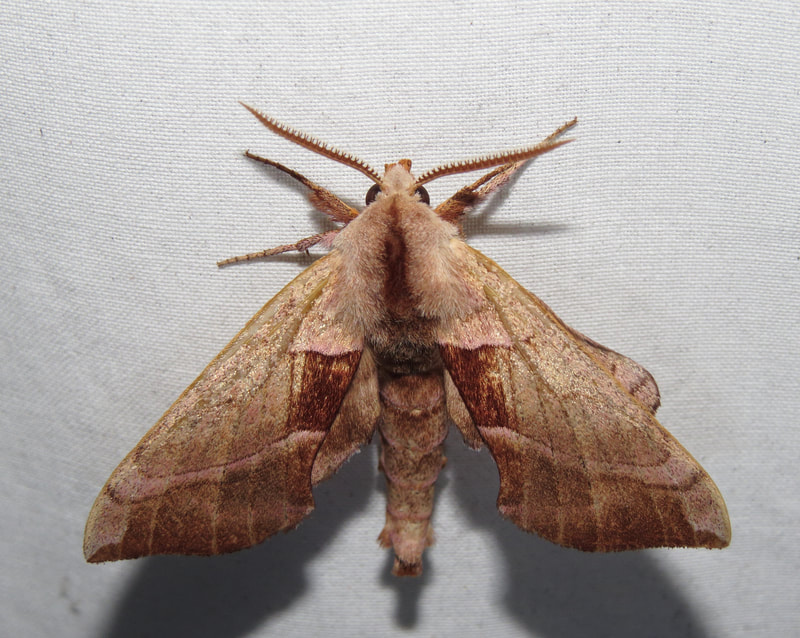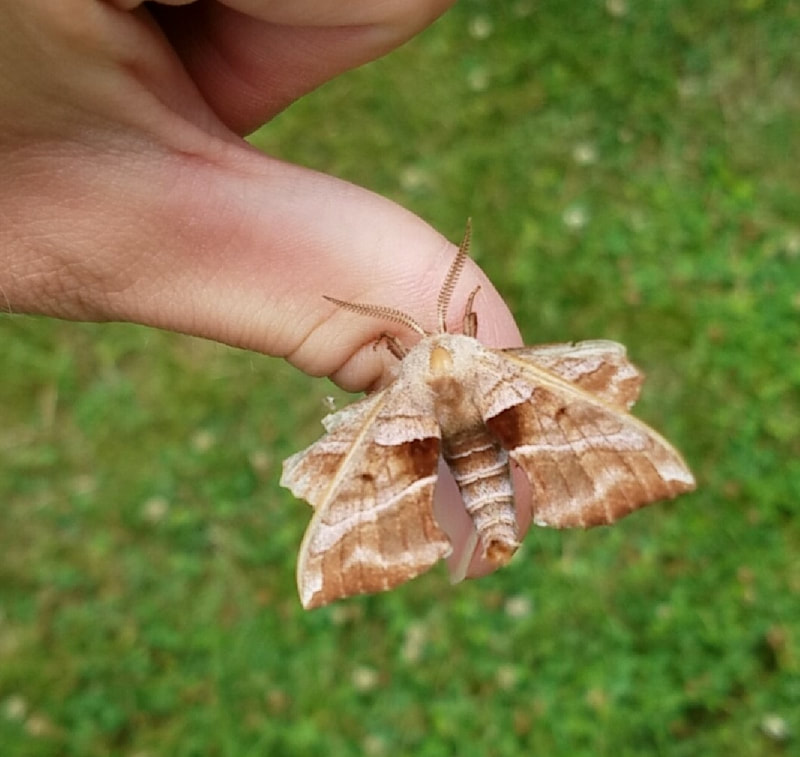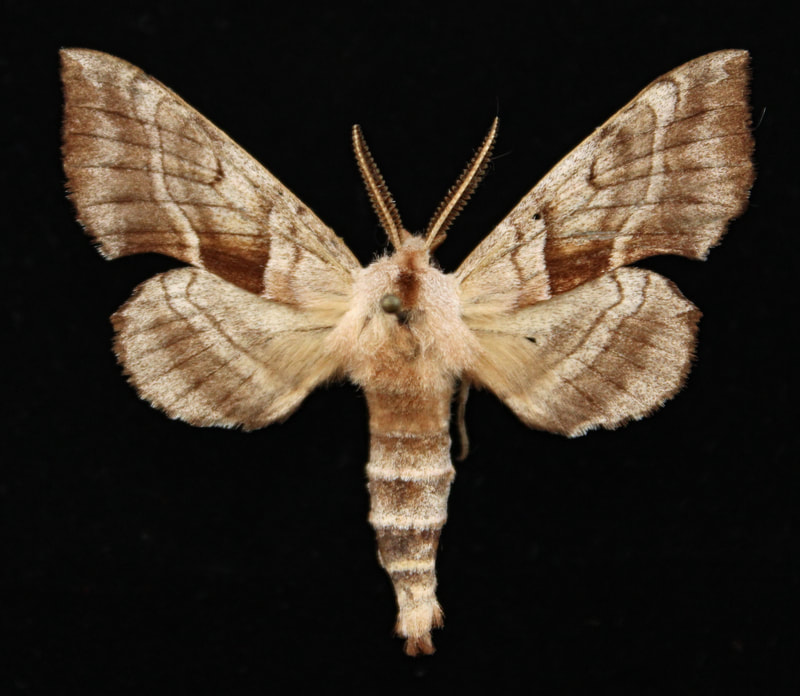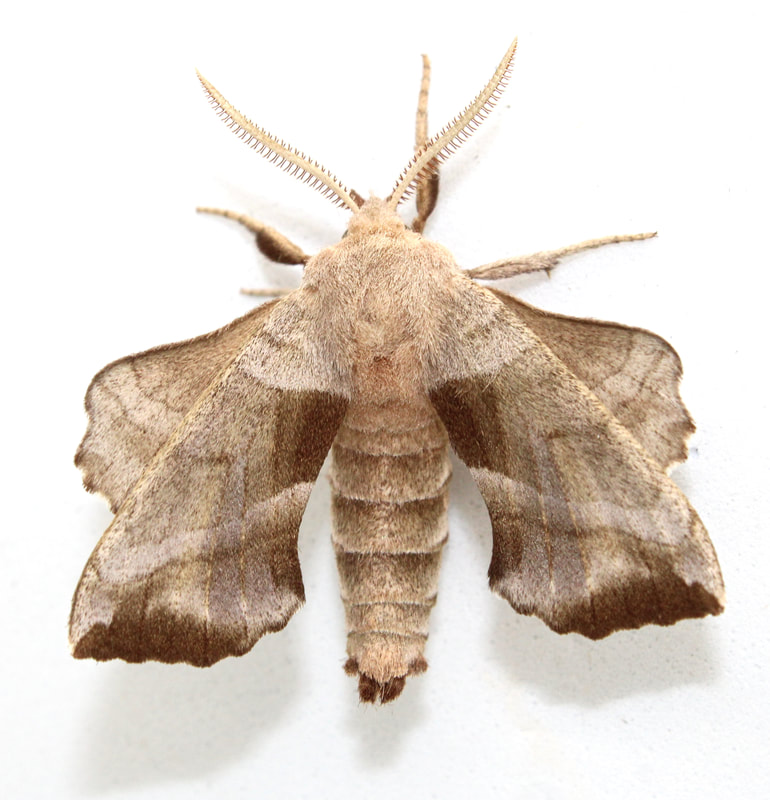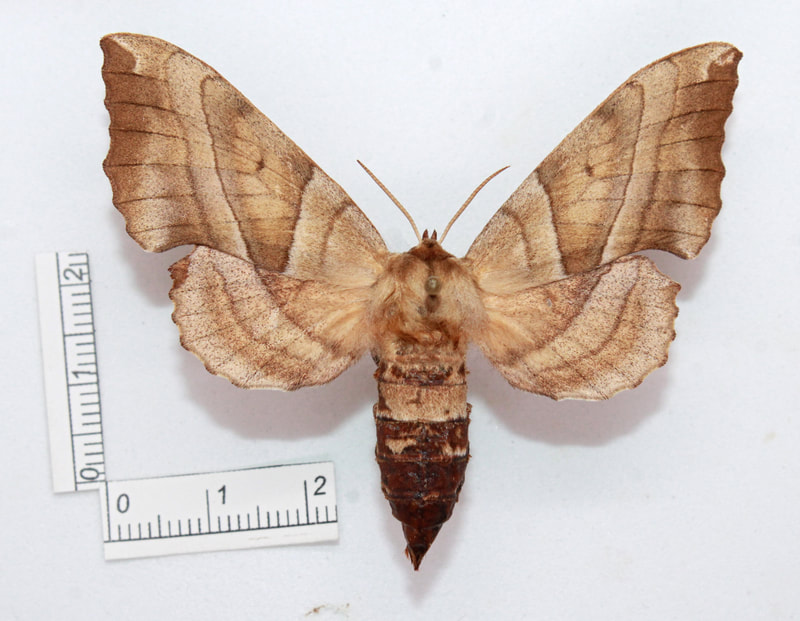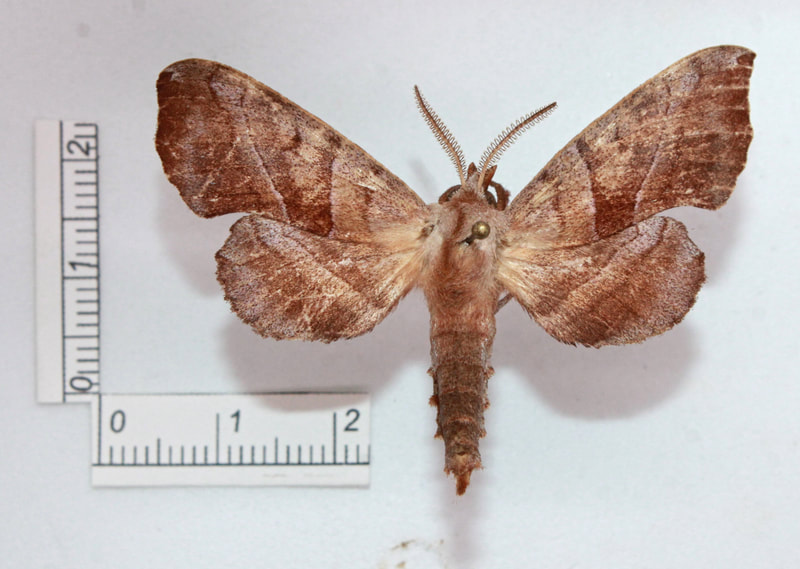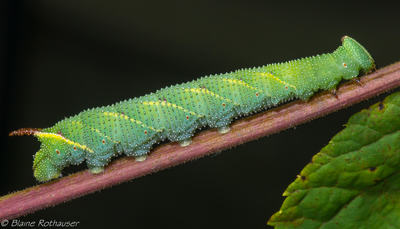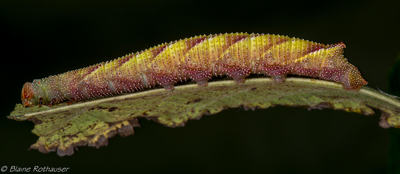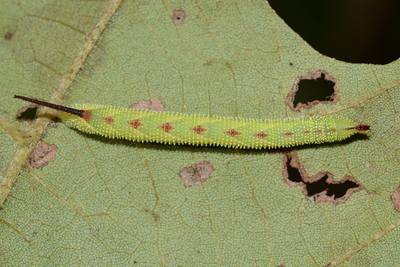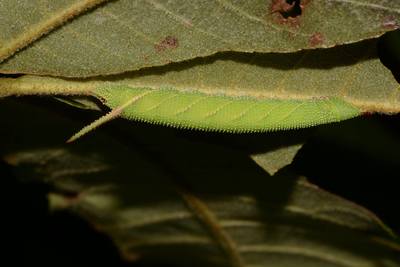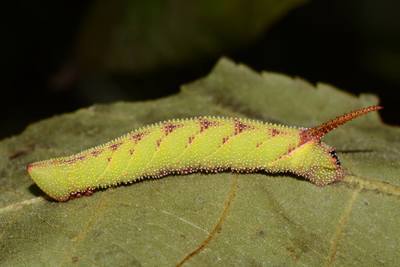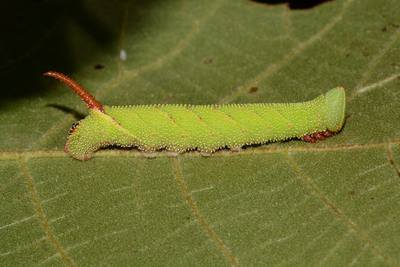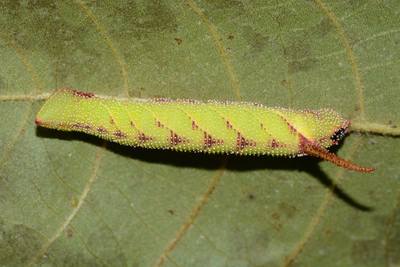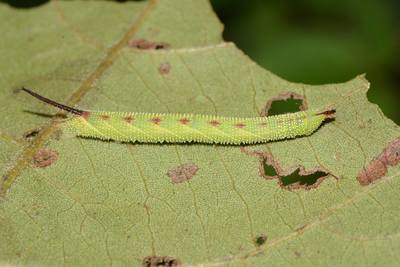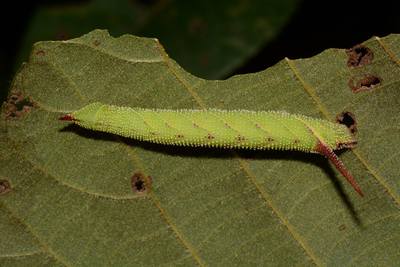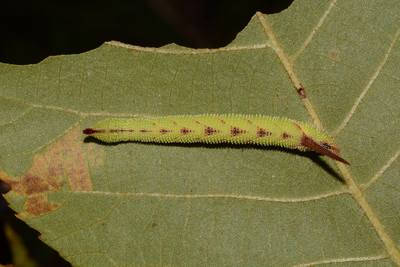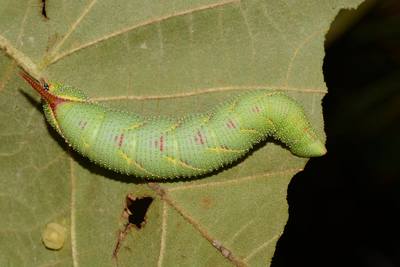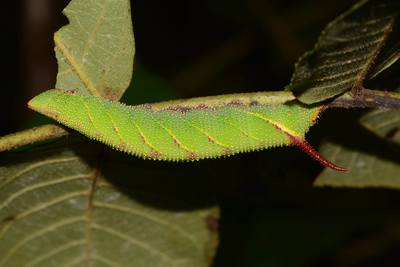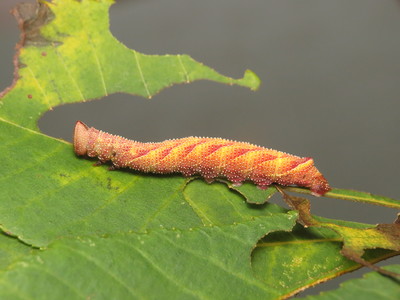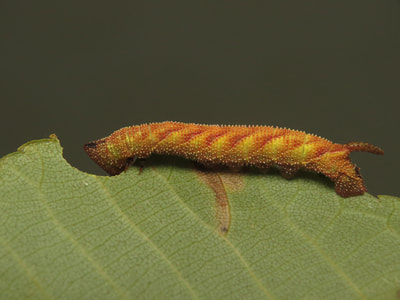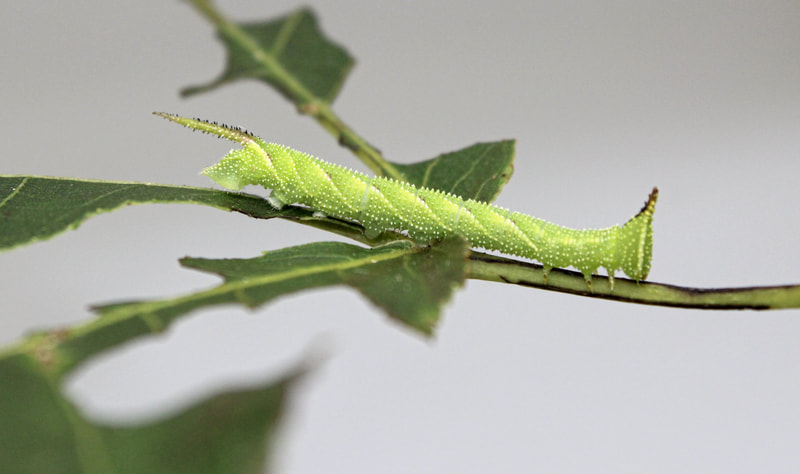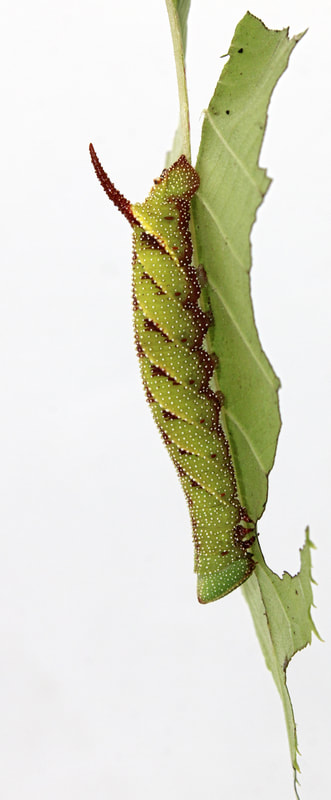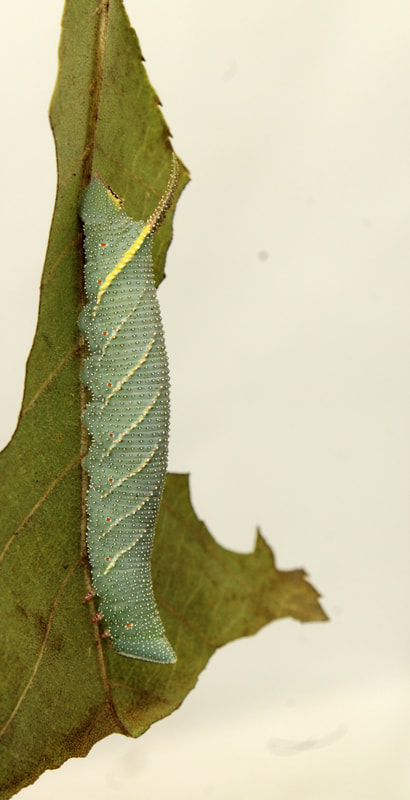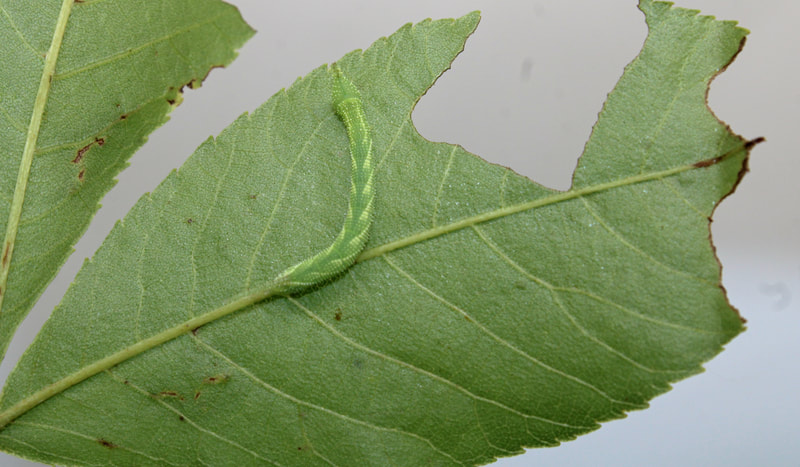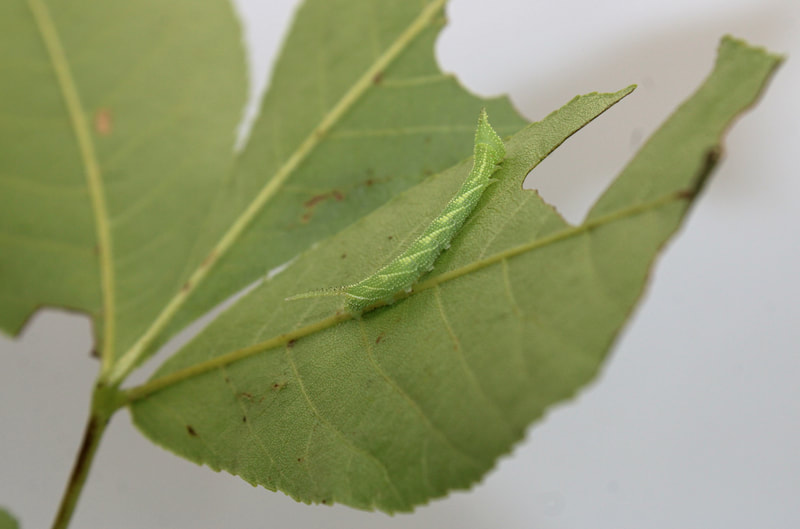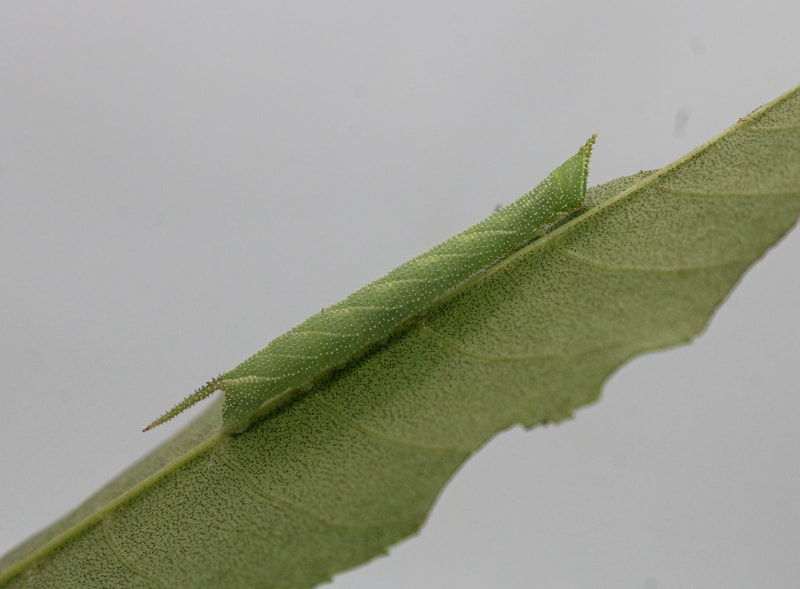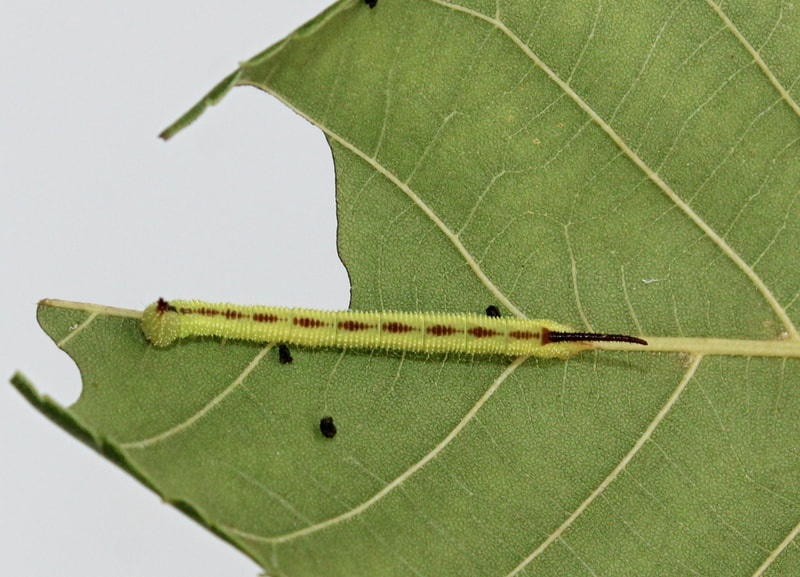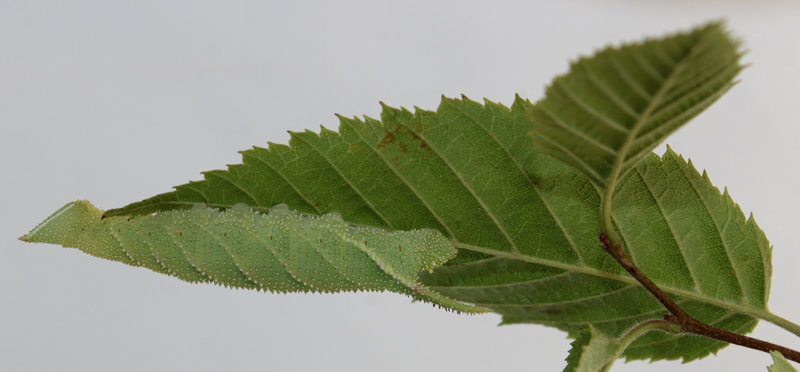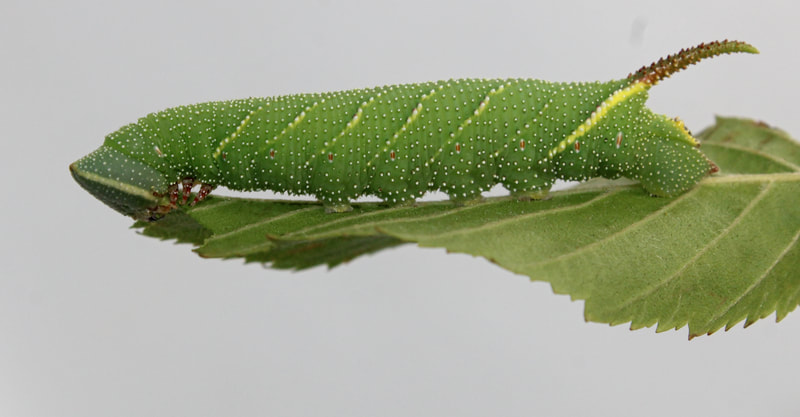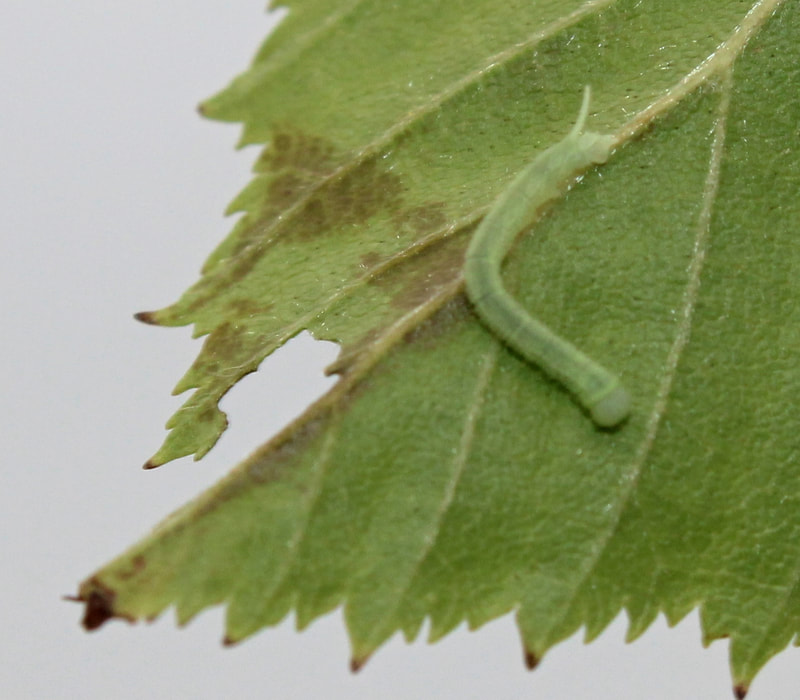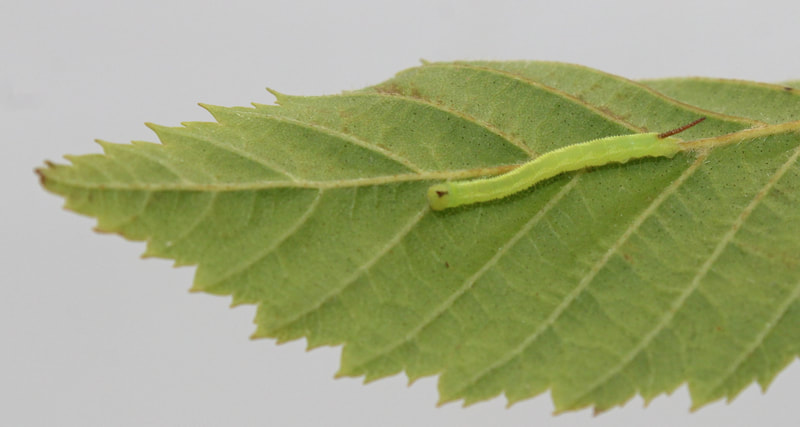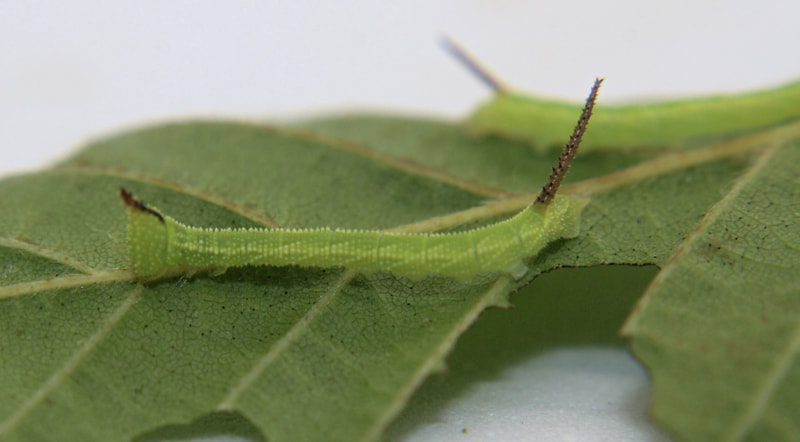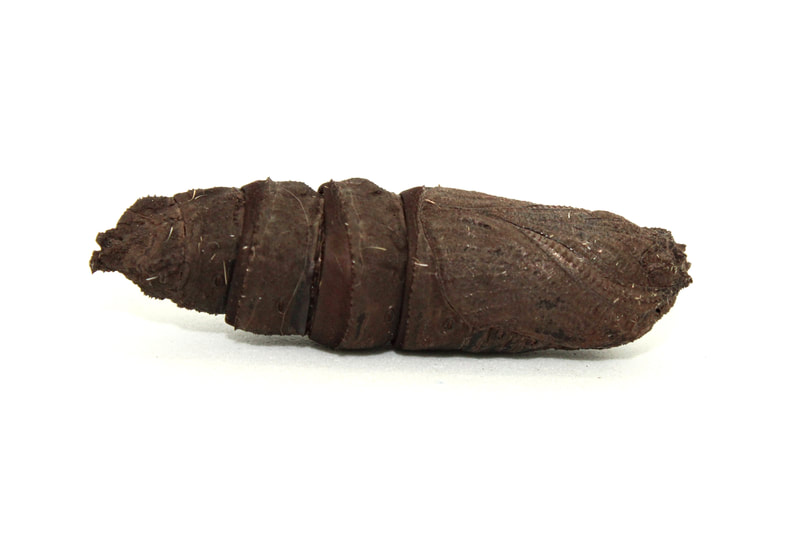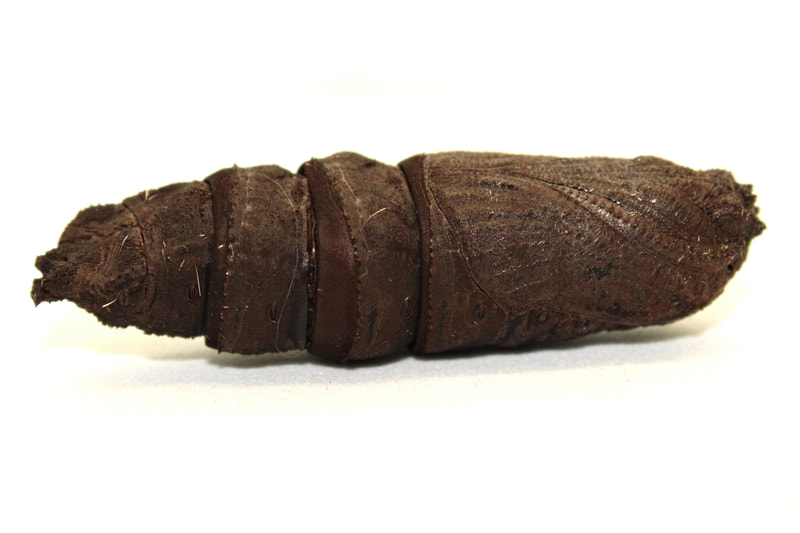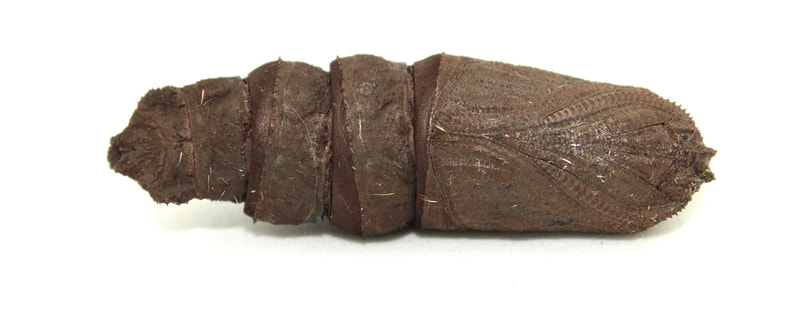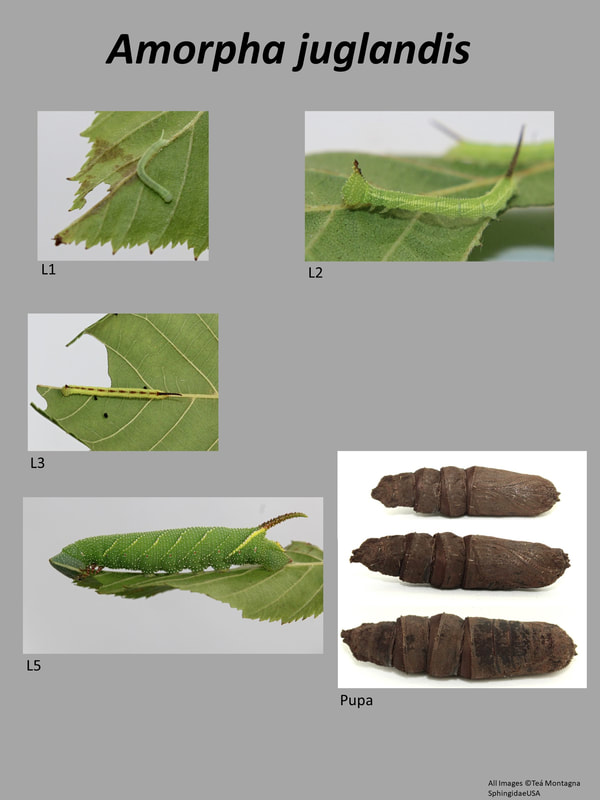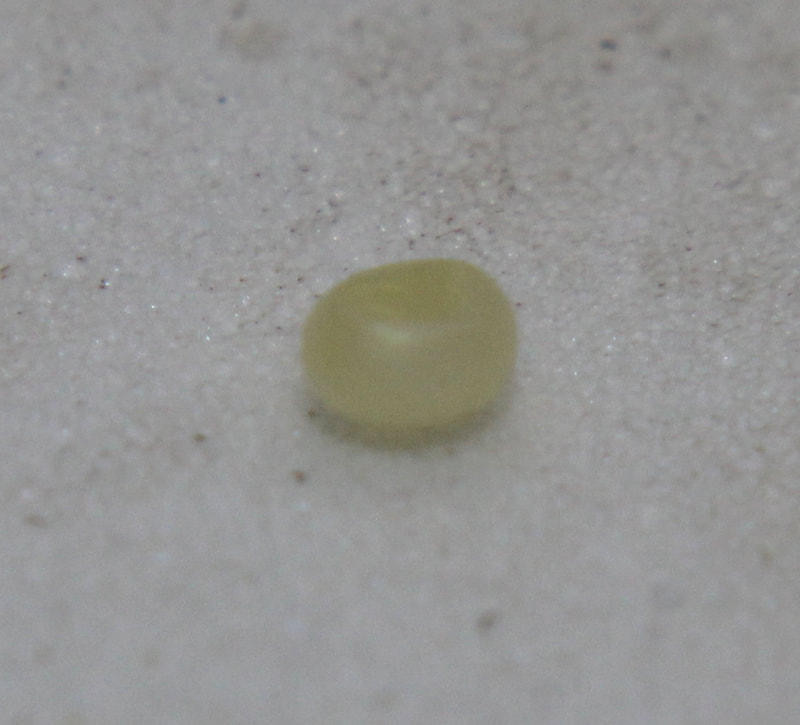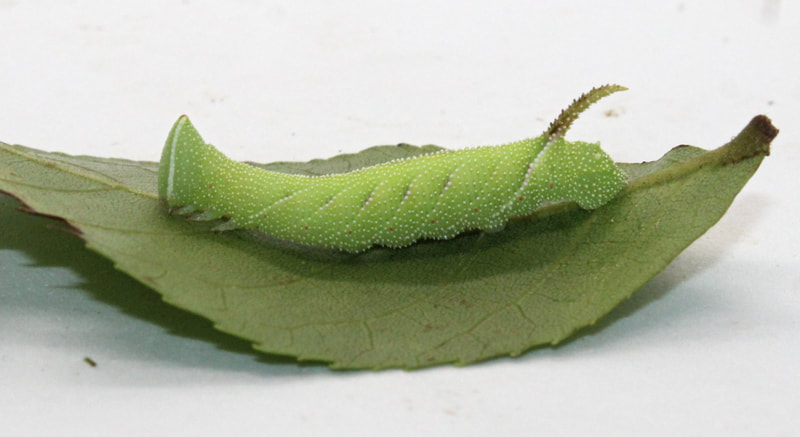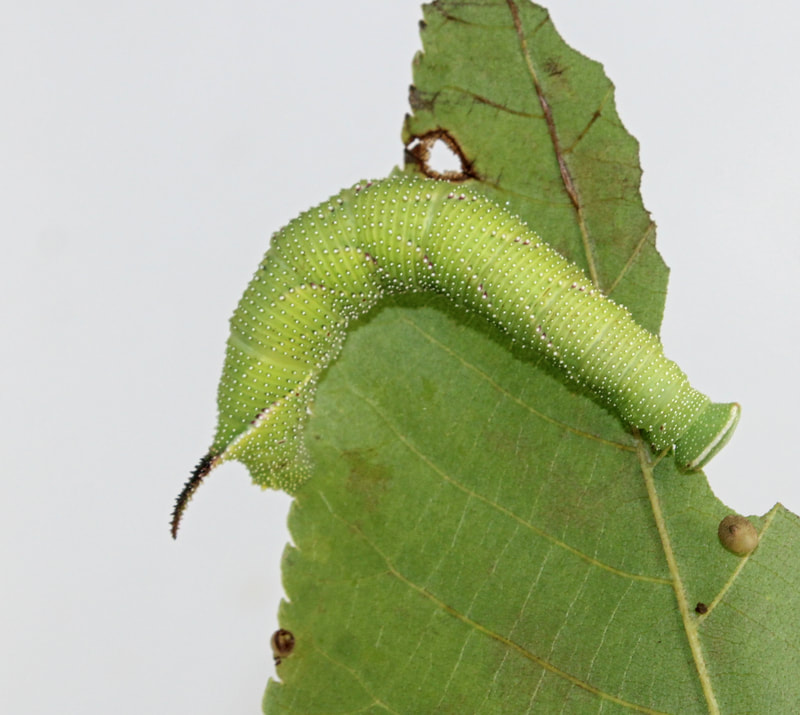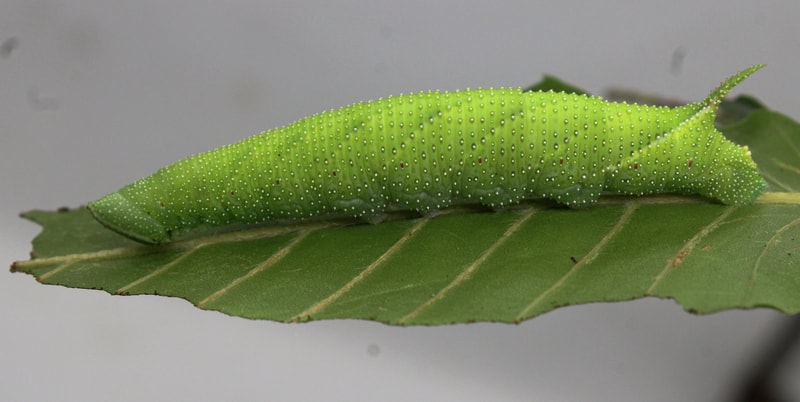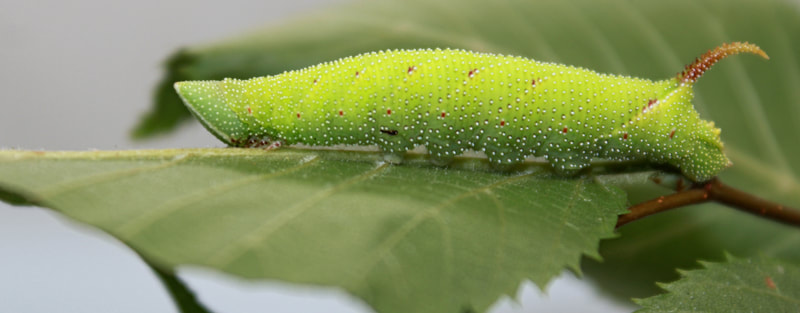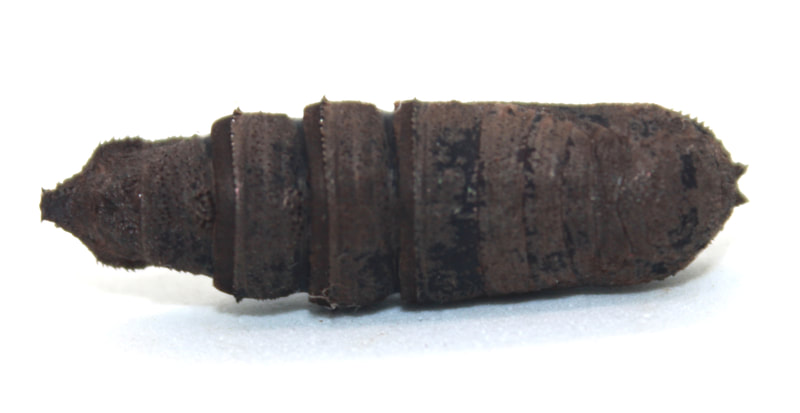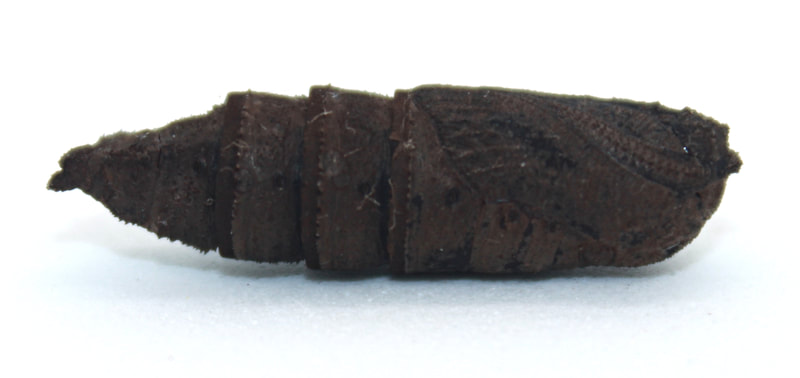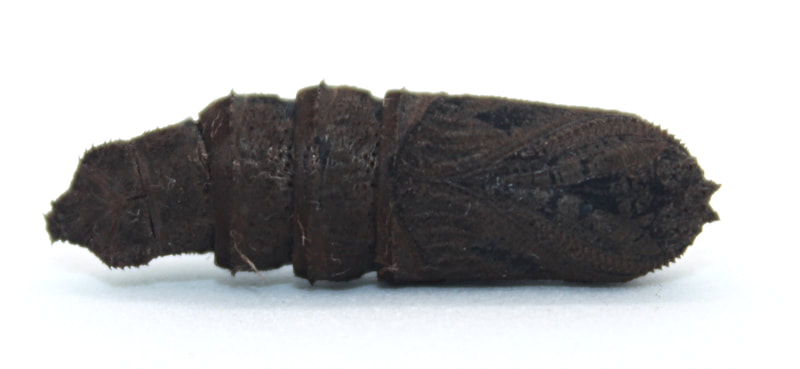|
Common Name: Walnut Sphinx
Ecology and Life History: This moth is active from May through August in the Northeast, likely flying year-round in the deep South. As this species doesn’t feed, light is the best method for attraction. Both sexes are quite attracted to light, and both show up with regularity at light traps. This species is sexually dimorphic. Males are smaller, darker, and more maculated than the females. Females are larger, more circular in shape, and lacks many of the darker areas the male has. Eggs are laid on the undersides of hostplant leaves. The larvae feed singly, and rest along the mid-vein during the day, becoming active at night to feed. When threatened, this larva squeaks by rapidly pushing air out of its spiracles, in conjunction with the squeaking, it will thrash around, attempting to scare off predators. As an adult this moth looks fairly standard across it’s range. In Western Texas, a small population of this moth has a more gray appearance rather than the typical brown. Larvae can have multiple forms and variations, addressed more thoroughly below. Habitat and Searching for Larvae: Larvae are found on plants in the Juglandaceae. They will also eat Hop Hornbeam and supposedly many other plants. Larvae are most easily located on Juglans or Carya species. Larvae will inhabit small saplings as well as large trees and everything in between. There are often multiple larvae in the same tree. Larvae are usually not out of reach, but some do feed higher up in the tree. Larvae are most reliably found by searching the undersides of leaves, paying close attention to the mid-vein. Young larvae will likely be passed over during a daytime search. This moth can be found anywhere it’s hostplants grow. It seems to not favor a specific habitat type though it has not been recorded from Atlantic Coastal Pine Barrens (1). Larvae are found from July through October in the Northeast, but likely earlier and later farther South, and close to year-round in the deep South. These larvae fluoresce brightly under UV light, making them easy to spot. They are also quite conspicuous just by using a regular flashlight to search a tree at night. Rearing Notes: Eggs are obtained easily by placing a female moth in a brown paper bag and leaving it for several days. Females will easily lay 100 or more eggs. These larvae are fairly polyphagous on two genera (Carya, Juglans) eating many species of each including Pecan, Black Walnut, Pignut Hickory. Outside of those species, they prefer other Juglandaceae but accept Ostrya (Hop Hornbeam). There are a number of reports of this species on many other plants, but captive rearing tests have not shown this polyphagous nature (1). This species is not too difficult to rear in captivity. They are hardy, not terribly susceptible to disease and are fairly tolerant of mistakes. This species does not appreciate being overcrowded. 3-5 larvae in a single medium sized tupperware is sufficient, but more is not recommended. In a large tupperware bucket, you could easily rear 50 larvae. Amorpha juglandis is sensitive to humidity, especially when rearing in tupperware. As long as containers are aired out once daily, the larvae are fine. Larvae are easily sleeved on hostplant. Larger sleeves can hold an entire female’s brood. Sleeves should be changed as needed and final instar larvae removed. While it has not been experienced, larvae almost certainly have the ability to bite through thin mesh enclosures, especially in their final instar. Pupation is easily achieved using the paper towel method (see the “General Information” section for a general rearing guide and description of this method). Soil is also an acceptable pupation medium. Hostplants: Click here to load this Caspio Cloud Database
Cloud Database by Caspio |
Adult Description: This is a sexually dimorphic species with the females being larger and rounder than males. The overall appearance of this moth is brown and mottled. Males have two dark patches on the forewings around the medial area, in females, this area is the same color of the wings, but has a darker outline. The hindwings are quite similar to the forewing, also being brown and mottled. The body color is the same color as the wings. Some individuals can have beautiful pink shading particularly toward the tips of the forewings. The way this moth sits is unique to the subfamily, and will help you narrow down your identification. If the hindwings are pulled up and are viewable from above the forewings, it’s likely a Smerinthinae.
Larval Description: L2: At this stage, the distinctive triangular head capsule is present. The larva already appears a bit rough, with the most granulose areas being the head and caudal horn. L3: The larva looks quite a bit different now, the white abdominal streaks are beginning to show up, and are often bordered in another color (purple, orange, pink, yellow, or others). The head capsule is quite rough and pointy, the apex is brown. The caudal horn is greenish with distinct black granules on it. L4: The larva is much the way it was in L3. The abdominal streaks are more visible, as well as their border color. The horn is reddish and quite granulose. L5: This larva is incredibly granulose. The triangular, pointy head capsule is fairly unique, helping separate this larva quickly from other species. Generally the larva is green with multiple white abdominal streaks. There are other forms of this larva including reddish brown, pink and orange, and mottled green and red. The horn is incredibly granulose as well, and is quite rough. When disturbed this larva will squeak, hiss, bite, and thrash around. |
The gallery to the left contains photos of Amorpha juglandis adults. If you have a photo that you would like to submit to us, please contact us.
The gallery to the right contains photos of Amorpha juglandis larval and pupal stages. If you have a photo that you would like to submit to us, please contact us.
The gallery to the right contains photos of Amorpha juglandis larval and pupal stages. If you have a photo that you would like to submit to us, please contact us.
|
|
|
